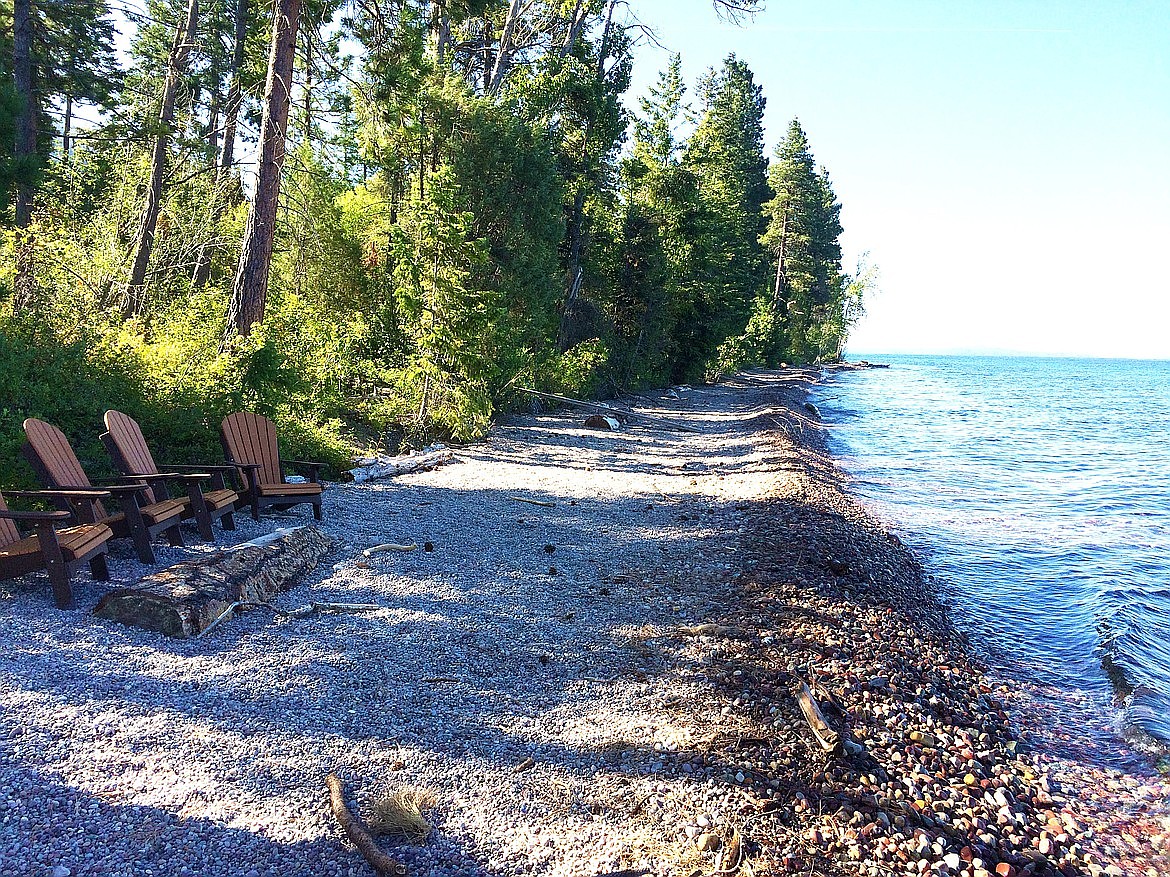Deep Dive into FLBS: Eroding Time at Flathead Lake
I’ve heard it said that age is just a number. Well, let me tell you something: Mine sure is doing a number on me. It wasn’t long ago that my nightly and morning personal hygiene rituals consisted of mindless poking at blemishes and brushing of teeth. Now, they’re a brutally unfiltered horror show of my body’s slow subjugation to the onslaught of time.
It’s as if overnight I’ve become a cabbage patch doll left too close to fireplace. My once vibrant and youthful exterior has melted. Hair follicles have relocated. New wrinkles, referred to ever so patronizingly by my two-year-old as “ouchies” (albeit with genuine toddler’s concern), are emerging every day.
I’m not naïve about the aging process. I have lived long enough to witness even the most seemingly immortal institutions slowly fade away (the extinction of the VHS rental industry, for example), and I fully accept that many of the things I resent about my reflection in the bathroom mirror are creations of my own design.
“Hey, Ian! Remember all of those sunburns you got when you refused to wear suntan lotion in high school? Well, congratulations! You’re the recipient of two basal cell carcinomas and an entire body’s worth of leathery skin!”
Time is undefeated, it’s true. While I’d assumed I had a little more of it before it started running up the score, change is a humbling reality that we must all accept eventually, and it’s certainly not limited to my outward appearance or (I’m sure to much a lesser degree) yours.
Even our beloved Flathead Watershed shows its age, as geologic and hydrologic processes continually bring about change. This is especially evident in the eroding shorelines of Flathead Lake and the Flathead River. Some of that erosion is normal, of course, but just like all of those stuffed crust pizzas I’ve eaten to make the proud owner of this second chin, our indulgence in recreation has made the erosion more pronounced.
The connection between Flathead Lake recreation and eroding shorelines has to do with lake level regulation by the dam at the lake outlet near Polson. The 50-year federal license for Seli'š Ksanka Qlispe' Dam, that the Confederated Salish and Kootenai Tribes’ Energy Keepers Inc. are required to follow, was put in place decades ago when the dam was owned by Montana Power Company and still known as Kerr. Allowing communities to raise and lower the lake by 10 vertical feet, the license also requires lake level fluctuations remain on an annual schedule, which has Flathead Lake at full pool from mid-June to Labor Day to accommodate recreational opportunities and the associated tourism.
It's during those late summer and early fall days, a time when the lake would naturally be much lower, that wave action does its worst damage. Since the start of Flathead Lake’s water level regulation back in 1938, the lake’s North Shore near Bigfork has receded more than a mile, and the Bio Station has lost over 1.5 acres to shoreline erosion between 1991 and 2006 alone. As we speak, the shoreline at the newly minted Somers Beach State Park is eroding at a shocking rate of one meter per year.
Of course, enjoying Flathead Lake recreation is not a bad thing: It’s actually amazing, perhaps even life-changing. But just like spending time in the sunshine, we need to be mindful of the risks, and take the necessary steps to ensure that everyone can continue to make wonderful Flathead Lake memories.
Fortunately, former FLBS researcher Dr. Mark Lorang has a solution to restore eroded shoreline properties and safeguard them from future erosion. Utilizing a “design by nature” approach, Lorang constructs erosion control beaches that mimic the characteristics of naturally occurring beaches.
To construct these property protectors, Lorang implements tiers of different sized cobbles and gravels that absorb and decrease the force of waves while forming a dynamic protective berm. Beaches dissipate incoming wave energy as opposed to riprap and seawalls, the standard methods for erosion protection, which pass the erosive waves along to neighboring properties or reflect them back across the lake. The absorption of wave energy by beach gravels shifts them around, reshaping and changing the beach until a balance is reached between the aquatic and terrestrial environments.
Lorang’s beaches are not new to Flathead Lake. His first erosion control beaches go back more than 30 years. Bigfork business owner Bob Keenan witnessed significant erosion on his North Shore property and built one. In 2008, the US Fish and Wildlife Service followed suit and Lorang oversaw their construction of more than 4500 feet of beach near Bigfork, along the North Shore and near the Flathead River mouth. The Confederated Salish and Kootenai Tribes have worked with Lorang for decades to prevent erosion at the southern end of the lake, and Lakeside’s Volunteer Park boasts a Lorang beach as well.
In 2020, Lorang helped build a beach at the Bio Station to protect our property at Yellow Bay, and to serve as a demonstration project to show this beneficial technology to the public. Most recently, there are emerging plans with Montana State Parks to add erosion control beaches at Yellow Bay State Park and the aforementioned Somers Beach State Park. Of course, these beaches won’t be able to undo the shoreline that’s already been lost. But they will certainly prevent the destruction from getting worse.
And that’s the thing about aging, isn’t it? In the end, making smart and responsible decisions is the only real authority we have over the longevity or erosion of our bodies and the places we care about. And when I reflect on the time I have left with my family and friends in this wonderful Flathead Watershed, I want to be able to gaze into my reflection in the bathroom mirror and ask myself the question: “What are you doing to make the most of all you’ve been given?” Answering confidently, without hesitation: “Everything that I can.”


